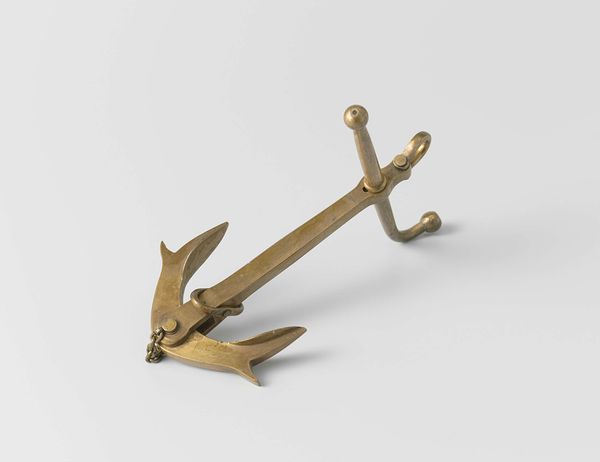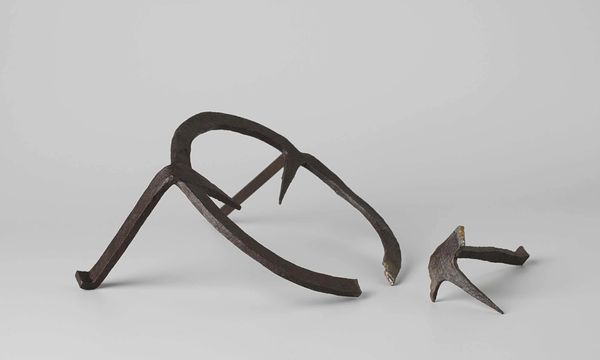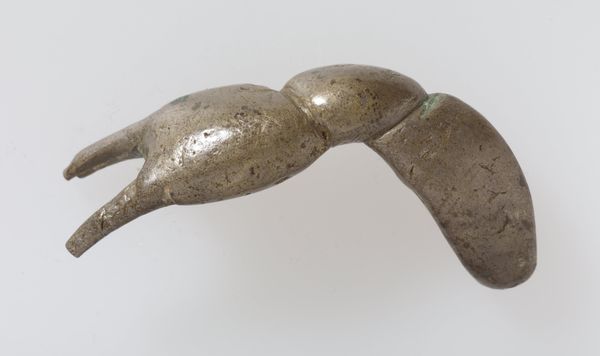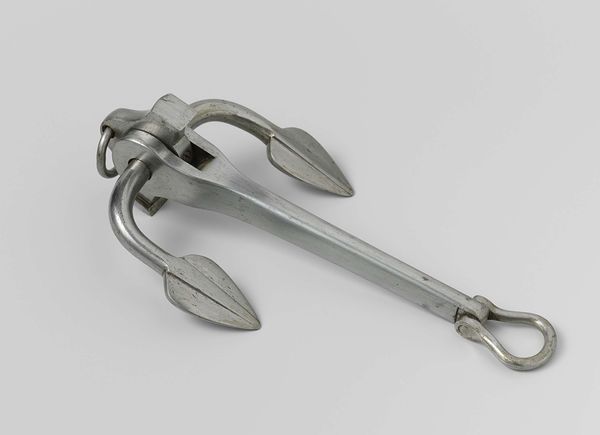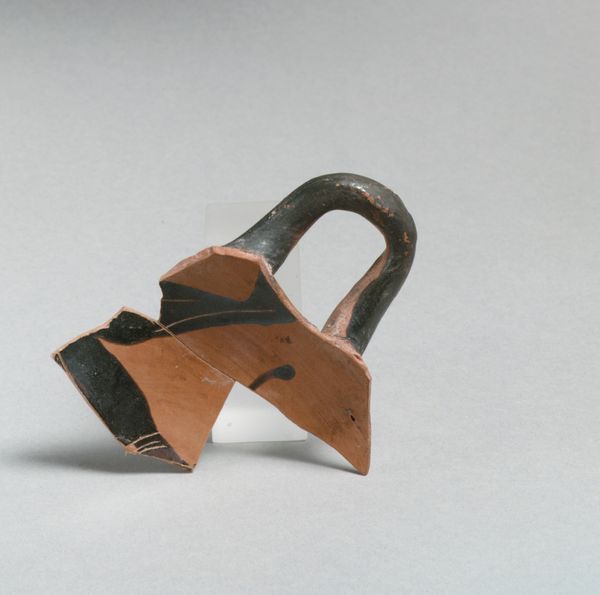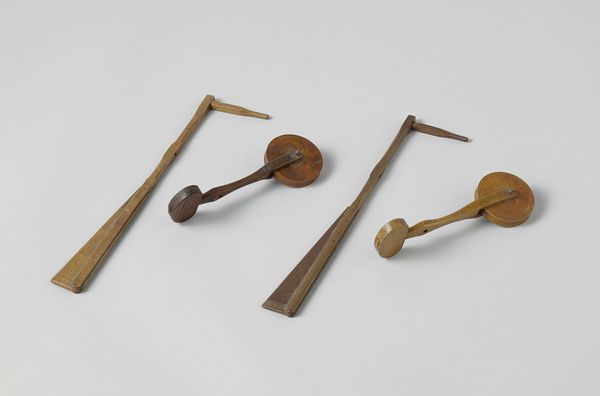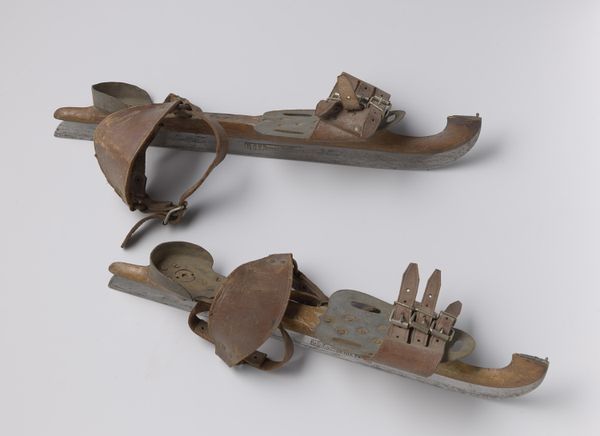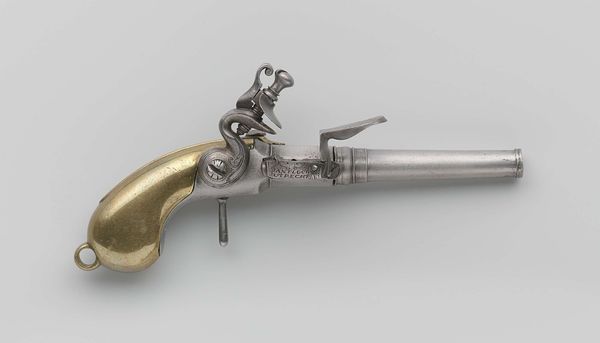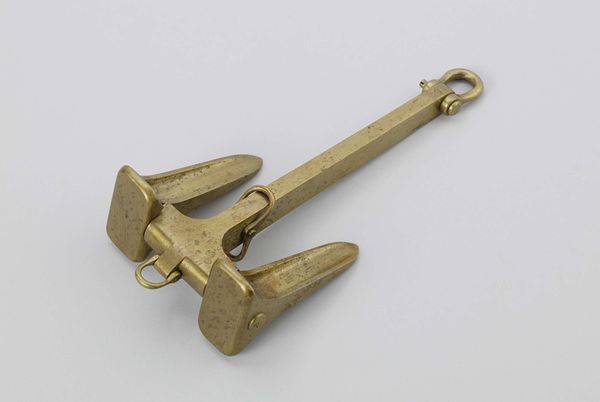
brass, metal, sculpture
#
brass
#
metal
#
sculpture
Dimensions: height 7.9 cm, width 34.5 cm, depth 25 cm
Copyright: Rijks Museum: Open Domain
Curator: Before us, we have an intriguing pair of objects known as "Can Hook," crafted from metal and brass before 1825 by the artist George Stebbing. They appear almost bird-like, don’t they? There’s a peculiar stillness about them, like small metallic creatures paused mid-flight, or perhaps a functional sculpture with some steampunk undertones. Editor: It’s difficult to avoid the politics implicit in this seemingly mundane object. I immediately think about labour and subjugation of people, animals, and resources in this historical period, what sort of “work” would these items been used for? In other words, in whose hands, and toward what purpose? These items might appear quaint, but in some respects their appearance also reinforces the historical context from which they were made. Curator: Undoubtedly, an implement born from function and necessity. Visually speaking, let's appreciate the textures at play—the smooth polish of the brass contrasted with the cooler ring— and the way the light bounces and catches on the curved surfaces. The negative space formed by their arrangement also creates a distinct dynamic. What is the formal structure of this object? A T form is the overarching construction in each object. It lends to an organized, but also top-heavy object. Editor: Yes, and if we consider this practically, this period saw the full flourishing of the industrial revolution; the design might be deceptively "simple," it nonetheless carries weight considering their existence intersects significantly with industrial development and the people employed to facilitate and bolster it. Curator: Of course! The lines are efficient, utilitarian, which seems to betray their function. One could look at it and surmise that the design optimizes its capabilities as a hook or fastener of some kind; though their exact purpose eludes immediate clarity, which underscores the artistry. We find artistry and a specific craft and method within the functional. Editor: It forces me to remember the labor it would have taken to build things during this period in general. There is a strong association here to those in servitude in labor and class systems as it was an economy built by indentured servitude of underpaid individuals forced to meet supply and demands in a market dominated by landowners or industrialists. In its current isolated and elevated position in a museum, we are further asked to engage in it outside of its place in history or its value, thereby assigning it as an art piece worthy of reflection rather than in the throes of production. Curator: Absolutely, our dialogue frames what exactly the piece is asking of its audience. The object has transcended its origins in terms of what it means in today’s modern climate. Editor: Indeed, they become powerful symbols and require acknowledgement of complex relations to both progress, human suffering, and their interlinking histories.
Comments
No comments
Be the first to comment and join the conversation on the ultimate creative platform.
